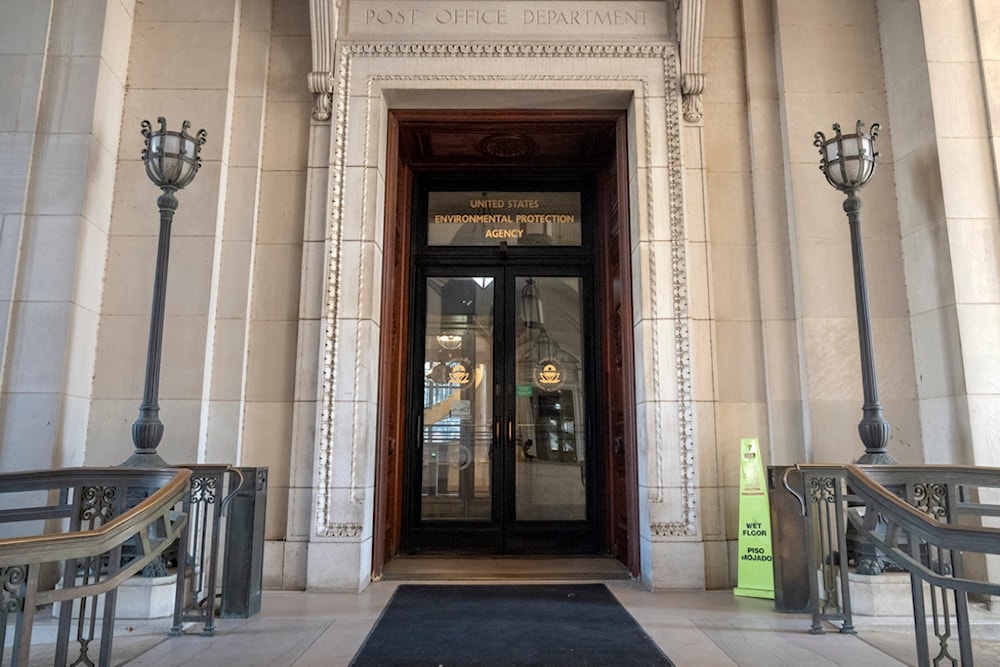Trump admin plans to fire hundreds of government scientists
Beyond workforce reductions, the administration has also moved to roll back 31 major environmental regulations, including those affecting power plants, refineries, and automobile emissions.
-

An entrance of the headquarters building of the Environmental Protection Agency is photographed Wednesday, March 12, 2025, in Washington (AP Photo/Mark Schiefelbein)
Lawmakers are raising concerns over a proposed plan by the Trump administration to lay off hundreds of scientists and researchers from the Environmental Protection Agency (EPA) as part of significant workforce reductions. The cuts would largely affect the agency's scientific research division, which employs more than 1,500 people and plays a key role in addressing pollution, clean water, and climate change.
According to documents examined by Democratic staff on the House Committee on Science, Space, and Technology, a majority of the affected employees are unlikely to be retained, while the remaining staff may be reassigned within the EPA.
The proposal, which has not yet been finalized, aligns with President Donald Trump's broader efforts to scale back government spending and environmental regulations. Earlier this year, he stated that EPA Administrator Lee Zeldin intends to reduce the agency's workforce by approximately 65%, which would significantly shrink its 17,000-employee structure.
Beyond workforce reductions, the administration has also moved to roll back 31 major environmental regulations, including those affecting power plants, refineries, and automobile emissions. The most recent efforts are part of what Zeldin has described as "the most significant day of deregulation in US history." Critics, however, argue that dismantling EPA oversight would result in increased pollution, disproportionately harming vulnerable communities.
When asked about the proposed staff cuts, EPA spokesperson Molly Vaseliou described the changes as part of ongoing efforts to improve the agency's operations. "We are committed to enhancing our ability to deliver clean air, water, and land for all Americans," she said. "While no decisions have been made yet, we are actively listening to employees at all levels to gather ideas on how to increase efficiency and ensure the EPA is as up-to-date and effective as ever."
EPA Cuts
The potential elimination of the EPA's Office of Research and Development (ORD) has drawn sharp criticism from Democratic lawmakers, who argue that scientific expertise is essential for fulfilling the agency's mission. Congresswoman Zoe Lofgren of California, the top Democrat on the House science committee, warned that gutting EPA research would hinder the agency's ability to protect public health and the environment.
"Every decision EPA makes must be in furtherance of protecting human health and the environment, and that just can't happen if you gut EPA science," Lofgren stated. She also accused the administration of trying to undermine scientific integrity, saying, "Last time around, Trump and his cronies politicized and distorted science... now, this is their attempt to kill it for good." She stressed that "EPA cannot meet its legal obligation to use the best available science" if research capabilities are dismantled.
Environmental advocacy groups have also voiced opposition to the proposed layoffs. Chitra Kumar, managing director of climate and energy at the Union of Concerned Scientists (UCS), underscored the critical role played by the EPA's scientific staff.
"The scientists and experts in this office conduct and review the best available science to set limits on pollution and regulate hazardous chemicals to keep the public safe," Kumar explained. She also cautioned against the risks of relying on industry self-regulation, adding, "The administration knows, and history shows, that industry will not regulate itself."
Read more: Trump admin removes climate crisis mentions from Government websites
Concerns have also emerged over the potential dismantling of environmental justice programs within the agency. Critics warn that scaling back initiatives aimed at protecting disadvantaged communities—such as those in California's Central Valley and San Francisco's Bayview-Hunters Point—could exacerbate health disparities and increase exposure to hazardous pollution in vulnerable areas.
The administration's broader deregulatory agenda is facing legal and political challenges, with environmental organizations and former EPA officials warning that these cuts could severely limit the agency's ability to respond to public health crises. Lawsuits are already being prepared to challenge the revocation of key environmental protections, as opponents argue that the government must follow legal procedures before dismantling established regulations.

 4 Min Read
4 Min Read










